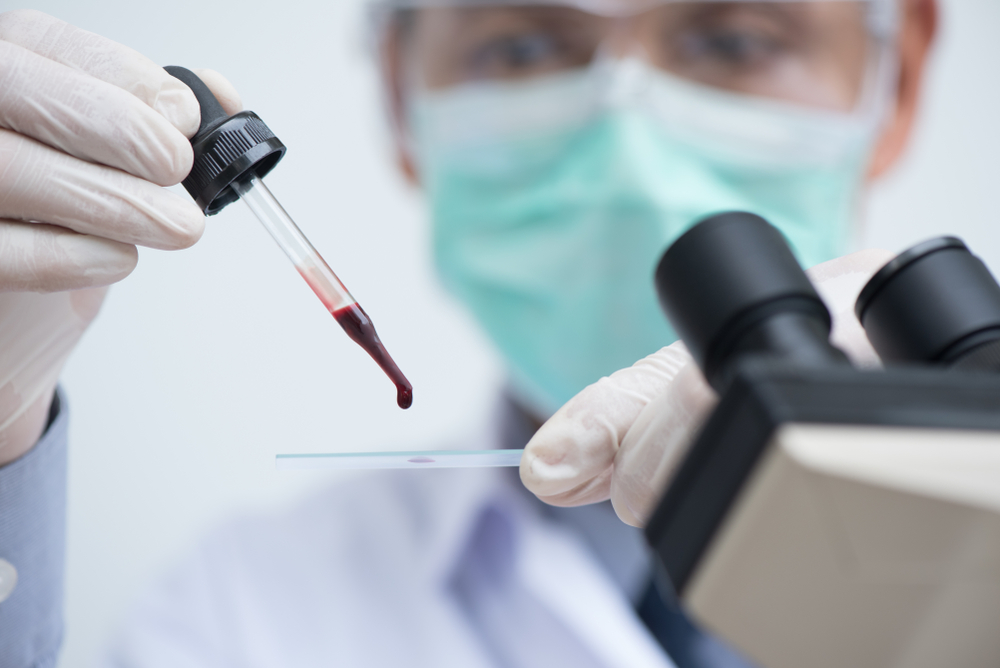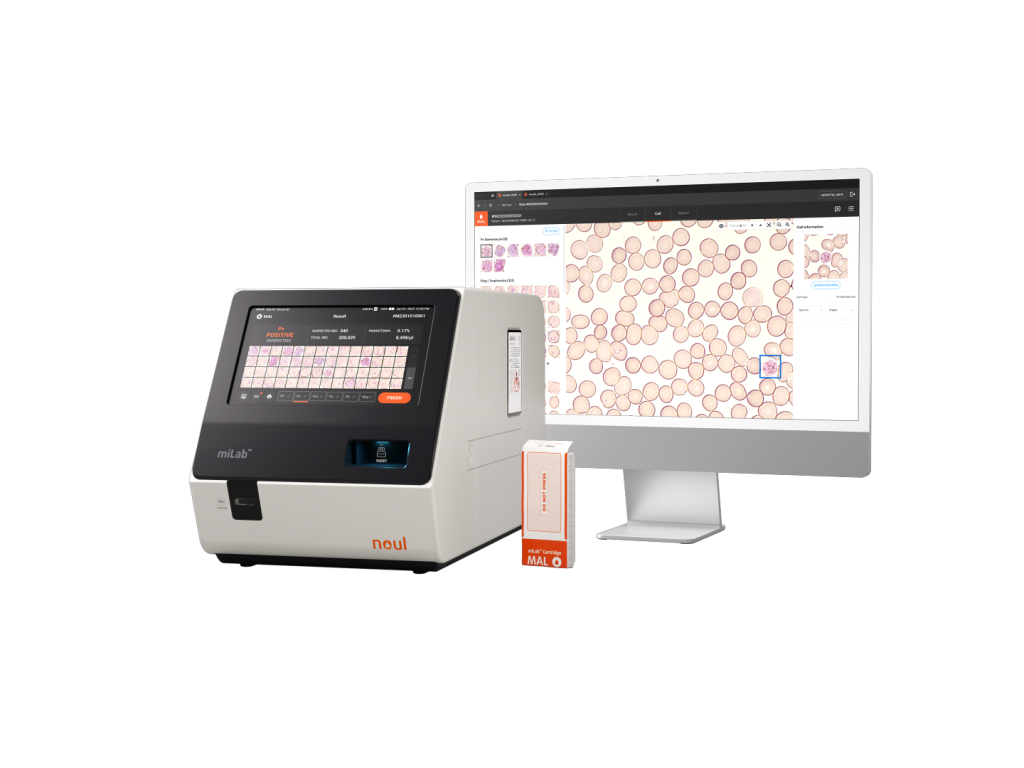
Source: Dr. Sanjai Nagendra
In May 2025, NOUL interviewed Dr. Sanjai Nagendra, Medical Director of the Labcorp Center for Esoteric Testing. The interview focused on Dr. Nagendra’s expert opinion on the impact of miLab™ MAL on the diagnostic landscape. Dr. Nagendra shared his insights based on his experience collaborating with Noul on malaria diagnostic projects over the past few years.
Dr. Nagendra is a physician and pathologist who specializes in the diagnosis of rare and complex diseases. He is also actively involved in developing diagnostic technologies in the field of hematology. He believes that AI-based malaria diagnostic technology will play a key role in the global fight against malaria. In a previous study, he announced that miLab™ MAL recorded a sensitivity and specificity of 100%, and he highly praised the product’s potential.
Partnership between U.S. diagnostics leader Labcorp and innovative company NOUL

Source: Tada Images / Shutterstock
Labcorp (Laboratory Corporation of America Holdings), the largest diagnostic testing company in the U.S. and the global leader, is a key institution in the diagnostic ecosystem and serves as a global validation hub for innovative diagnostic technologies. Recently, there has been a high interest in the latest technologies such as AI-based diagnostics, genomic analysis, and personalized medicine, which has led to a joint research project with NOUL, a company that develops AI-based diagnostic technology.
In 2023, NOUL and Labcorp jointly conducted a study to validate the AI diagnostic performance of miLab™ MAL, and the latest results of this study were published in the ‘Journal of Clinical Microbiology’. The study compared the diagnostic results of standard microscopy with those of Noul’s miLab™ MAL based on 409 blood samples collected from Labcorp’s reference laboratory. As a result, miLab™ MAL recorded 100 for sensitivity, specificity, positive predictive value(PPV), and negative predictive value(NPV).

Source: Journal of Clinical Microbiology
A malaria expert’s view on the key issues in malaria eradication

Source: Shutterstock
Dr. Nagendra discussed the current status of malaria in the U.S., emphasizing the importance of diagnosis. He explained that while malaria is not endemic in the United States, cases primarily arise from travelers entering the country. Rarely, local transmission also occurs when U.S.-based Anopheles mosquitoes bite an infected traveler and then transmit the parasite to another person. He also added that while there are many laboratories in the U.S., there are only a small number of malaria diagnosis experts, creating a diagnostic gap. He noted that this gap is widening due to an increase in international travel and the expansion of flights to malaria-endemic regions.
More specifically, Dr. Nagendra explained that malaria diagnosis using microscopy requires a high level of expertise, including the need for very precise slide preparation and manually observing more than 300 fields of view to detect low-parasitemia infections with few parasites. He also pointed out that PCR tests can only confirm the presence of an infection but cannot quantify the parasite load, while RDTs often lack sufficient sensitivity, leading to a higher possibility of false-negative or false-positive results.
He emphasized accessibility as the biggest challenge in diagnostics. In sub-Saharan Africa, access to hospitals is extremely limited due to poverty, conflict, and corruption, and a lack of infrastructure and trained personnel is also a major issue. He noted that the value of AI-based diagnostic tools is therefore increasing in the diagnostic industry. He highly praised NOUL’s miLab™ MAL, evaluating it as a valuable tool that can be used in the field with minimal training and accurately diagnose low-parasitemia infections that are difficult to detect with existing methods.
Dr. Nagendra’s Evaluation of NOUL’s miLab™ MAL

Source: noul
Dr. Nagendra commented that the miLab™ MAL study conducted at Labcorp was “very impressive.” He highly praised the product’s performance, stating that both sensitivity and specificity recorded 100%, and that miLab™ MAL accurately detected cases that even experts, including pathologists, had missed. He emphasized that, for example, it did not mistake other blood components like nucleated red blood cells or intracellular bodies for malaria, and this high accuracy led to the 100% specificity result. He concluded that this outcome demonstrates the miLab™ MAL platform can be even more sensitive than traditional microscopic examination.
He stated that the miLab™ MAL he experienced showed excellent overall diagnostic performance and great potential in both endemic and non-endemic regions. In particular, he felt it was well-suited for use in environments with limited infrastructure, noting that it is designed so that field technicians or clinicians can use the device effectively with just a few weeks of training.
The joint study by Labcorp and NOUL particularly focused on Plasmodium falciparum. This is the most lethal species of malaria and is responsible for the majority of imported cases of malaria in the United States. miLab™ MAL innovatively improved the accuracy of malaria diagnosis by precisely identifying P. falciparum even in cases of pfhrp2/3 deletion. Dr. Nagendra noted that because other species like P. vivax and P. malariae were not included in this study, there is a need for additional evaluation of the platform’s performance for accurate diagnosis in endemic regions where mixed infections are common.
He also expressed his expectation that if this product is strategically deployed in cooperation with relief organizations or ministries of health, it could bridge the diagnostic gap. While residents in malaria-endemic regions often have to walk for hours, or even days, to get to a hospital, miLab™ MAL is a small, highly portable device that can perform diagnoses near the patient, offering a solution to the accessibility problem.
The Current Status of Global Malaria Eradication and the Future of Technology

Source: Shutterstock
At the end of the interview, Dr. Nagendra emphasized that improving access to diagnostic and treatment services at the community level is key to malaria eradication. He stated that if AI-based diagnostic technology can solve the accessibility problem, it could significantly reduce the global burden of malaria. He added that if a system is put in place to also provide treatment, the goal of global malaria eradication could be achieved in the near future.
Ready to see how a solution validated by Labcorp is tackling malaria with exceptional accuracy? Discover the full story of miLab™ MAL here.

